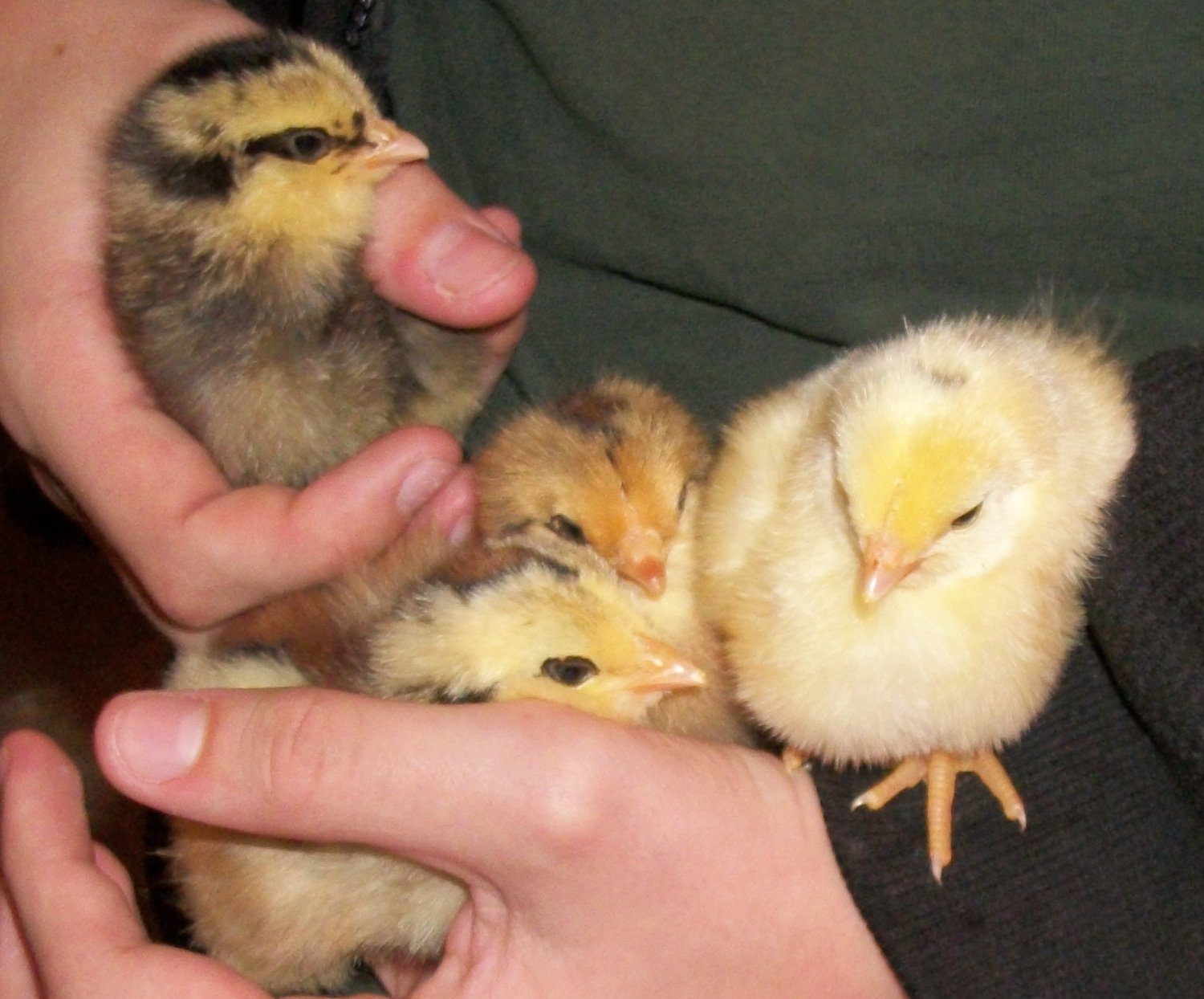Mine are unfazed by weather, as hardy as my Dominique's . They produce big blue eggs about 6 days a week. A little more stand offish than some breeds and not as weary free ranging but do fine. they love grass and will reward you with beautiful eggs.
Navigation
Install the app
How to install the app on iOS
Follow along with the video below to see how to install our site as a web app on your home screen.
Note: This feature may not be available in some browsers.
More options
You are using an out of date browser. It may not display this or other websites correctly.
You should upgrade or use an alternative browser.
You should upgrade or use an alternative browser.
-
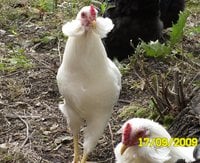 d0121432_araucana-478-312752.jpeg174.1 KB · Views: 4,778
d0121432_araucana-478-312752.jpeg174.1 KB · Views: 4,778 -
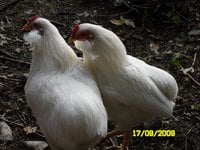 372a265d_araucana-478-769846.jpeg99.6 KB · Views: 4,957
372a265d_araucana-478-769846.jpeg99.6 KB · Views: 4,957 -
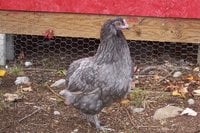 e15008b4_araucana-478-703806.jpeg161 KB · Views: 4,315
e15008b4_araucana-478-703806.jpeg161 KB · Views: 4,315 -
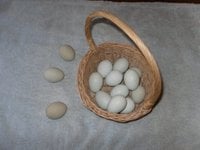 13e71c8e_araucana-478-449305.jpeg61.9 KB · Views: 4,997
13e71c8e_araucana-478-449305.jpeg61.9 KB · Views: 4,997 -
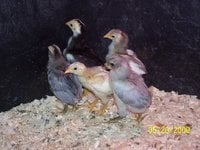 8fe99cd3_araucana-478-23989.jpeg93.7 KB · Views: 4,788
8fe99cd3_araucana-478-23989.jpeg93.7 KB · Views: 4,788 -
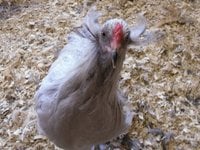 7bb07fd4_araucana-478-36060.jpeg100.6 KB · Views: 4,680
7bb07fd4_araucana-478-36060.jpeg100.6 KB · Views: 4,680 -
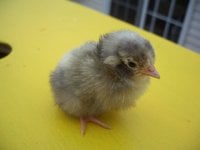 b1236ab7_NewTuftedChicks008.jpeg32.8 KB · Views: 4,896
b1236ab7_NewTuftedChicks008.jpeg32.8 KB · Views: 4,896 -
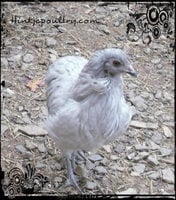 92848835_lav1.jpeg75.8 KB · Views: 4,932
92848835_lav1.jpeg75.8 KB · Views: 4,932 -
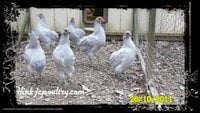 08b2843d_lav2.jpeg172.1 KB · Views: 4,792
08b2843d_lav2.jpeg172.1 KB · Views: 4,792 -
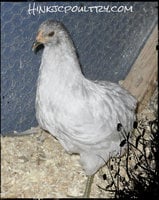 b97ad49e_lav4.jpeg190.3 KB · Views: 4,785
b97ad49e_lav4.jpeg190.3 KB · Views: 4,785 -
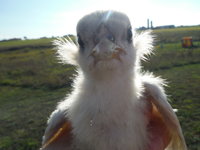 a7ab8e2a_Araucanas047.jpeg1 MB · Views: 4,699
a7ab8e2a_Araucanas047.jpeg1 MB · Views: 4,699 -
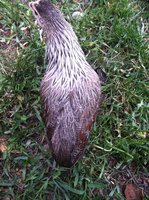 3757fec3_image.jpeg1.3 MB · Views: 4,247
3757fec3_image.jpeg1.3 MB · Views: 4,247 -
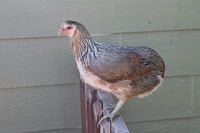 fe99fbba_IMG_2395.jpeg3.2 MB · Views: 6,876
fe99fbba_IMG_2395.jpeg3.2 MB · Views: 6,876 -
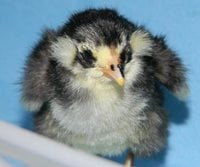 8c6e6633_DSCN9919.jpeg59.4 KB · Views: 4,883
8c6e6633_DSCN9919.jpeg59.4 KB · Views: 4,883 -
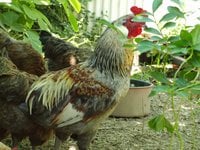 ae8f5c4f_araucana.jpeg333.3 KB · Views: 5,043
ae8f5c4f_araucana.jpeg333.3 KB · Views: 5,043 -
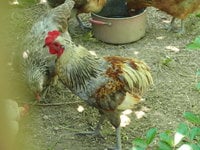 caeb3b79_CIMG0309.jpeg2.2 MB · Views: 4,724
caeb3b79_CIMG0309.jpeg2.2 MB · Views: 4,724
Araucana
- Added by Super Admin
- Create date
- Updated
Araucana is a very rare breed with much controversy and numerous challenges. Hatcheries add to...
- jeffsmith13
- 5.00 star(s)
Pros: fantastic egg production
Cons: none
- Tunderwood
- 5.00 star(s)
2 Gifted/adopted from a friend.
- Chicken Goddess
- 5.00 star(s)
Pros: Look cool / feathers shine in the sun / food wise / child friendly
Cons: A "To die for" chicken
I have a black araucana. she is sooo CUTE!! They are very interested in things and dont squirm when you hold them. try to get a black one, their feathers shine in the sun green and purple! Wicked
- Araucana16
- 5.00 star(s)
Pros: Gorgeous, sweet, they have personalities, good layers
Cons: Like to wander, can be crazy!
I had three of these birds. Each one looked so different from the next (one a deep chestnut speckled black, one black, tan, and white, and one white), and each one was absolutely gorgeous! When we went to sell the girls, the new owner asked if they were show hens!
They are so sweet! My chickens were largely pets, so I gave them tons of attention, but still I think that they had to have some of their loving personality inherited. Two at least... I had one who was fine with being held, very kind, didn't seem to mind whatever we did to her, liked to fall asleep in people's arms, and cooed Her name was Clover. Then I had Lilac, who was the most personable hen I've met. She'd beg to be held and liked to be tickled and to lay like a baby on her back in your arms. She was precious, and my absolute favorite. The white hen, August, was a diva. It was a struggle to catch her, and she really didn't seem to enjoy human interaction that much. That being said, she certainly wasn't mean! Auggie was fine with being held, stayed calm, just ran away when you put her down... I got the feeling she didn't like people.
Her name was Clover. Then I had Lilac, who was the most personable hen I've met. She'd beg to be held and liked to be tickled and to lay like a baby on her back in your arms. She was precious, and my absolute favorite. The white hen, August, was a diva. It was a struggle to catch her, and she really didn't seem to enjoy human interaction that much. That being said, she certainly wasn't mean! Auggie was fine with being held, stayed calm, just ran away when you put her down... I got the feeling she didn't like people.
Each one of my girls had such a personality! Clover got the nickname Intrepid. She looked like she was in charge, mostly black and huge, and she WAS! She strutted around like she owned the joint and the other hens listened to her, no questions asked. And she was afraid of nothing! She loved to explore and once attacked a bird. Lilac was shy and sweet, like a little lamb. She was certainly a follower, and was a perfect darling. August was very different from her counterparts. She was wild, loud, a bit violent, and hard to control. I loved her, and she never pecked or tried to hurt me at all. The only "person" who could even sorta control her was Clover.
They were good layers, if thats not all you care about. 2 eggs a day was normal, they were large and pale green, and DELICIOUS! I was very happy with the eggs they produced.
On the con side, they wandered. I kept them in their run when I was away, but once I got home, they were released, and probably 5 times a day, I would make my brother come, and we would go searching. They'd run off again! It was already hard to find them, and once you did find them, Lilac was the only one that came easy. August was a field day to catch.
 All of our neighbors knew we had chickens a week after we let them free range, simply because they refused to stay in one place.
All of our neighbors knew we had chickens a week after we let them free range, simply because they refused to stay in one place.
They were a bit erratic, and wonderfully so, but if you are looking for a calm hen, they aren't for you. That being said, they are a joy to have around, and I recommend them in every way!
They are so sweet! My chickens were largely pets, so I gave them tons of attention, but still I think that they had to have some of their loving personality inherited. Two at least... I had one who was fine with being held, very kind, didn't seem to mind whatever we did to her, liked to fall asleep in people's arms, and cooed
 Her name was Clover. Then I had Lilac, who was the most personable hen I've met. She'd beg to be held and liked to be tickled and to lay like a baby on her back in your arms. She was precious, and my absolute favorite. The white hen, August, was a diva. It was a struggle to catch her, and she really didn't seem to enjoy human interaction that much. That being said, she certainly wasn't mean! Auggie was fine with being held, stayed calm, just ran away when you put her down... I got the feeling she didn't like people.
Her name was Clover. Then I had Lilac, who was the most personable hen I've met. She'd beg to be held and liked to be tickled and to lay like a baby on her back in your arms. She was precious, and my absolute favorite. The white hen, August, was a diva. It was a struggle to catch her, and she really didn't seem to enjoy human interaction that much. That being said, she certainly wasn't mean! Auggie was fine with being held, stayed calm, just ran away when you put her down... I got the feeling she didn't like people.Each one of my girls had such a personality! Clover got the nickname Intrepid. She looked like she was in charge, mostly black and huge, and she WAS! She strutted around like she owned the joint and the other hens listened to her, no questions asked. And she was afraid of nothing! She loved to explore and once attacked a bird. Lilac was shy and sweet, like a little lamb. She was certainly a follower, and was a perfect darling. August was very different from her counterparts. She was wild, loud, a bit violent, and hard to control. I loved her, and she never pecked or tried to hurt me at all. The only "person" who could even sorta control her was Clover.
They were good layers, if thats not all you care about. 2 eggs a day was normal, they were large and pale green, and DELICIOUS! I was very happy with the eggs they produced.
On the con side, they wandered. I kept them in their run when I was away, but once I got home, they were released, and probably 5 times a day, I would make my brother come, and we would go searching. They'd run off again! It was already hard to find them, and once you did find them, Lilac was the only one that came easy. August was a field day to catch.

They were a bit erratic, and wonderfully so, but if you are looking for a calm hen, they aren't for you. That being said, they are a joy to have around, and I recommend them in every way!
- Jewls819
- 5.00 star(s)
Pros: Very smart, talkative and friendly. Lots of lovely blue eggs!
Cons: Must trim vents for good fertility. Double tufts cause less chicks to hatch. Hard to find.
I will never stop breeding these birds. The breeding issues are so worth the trouble and I have had many successful hatches since I started to trim vent area in the spring. I also love that hens do go broody, hatch their own chicks and make great moms. My ladies give me a large amount of beautiful blue eggs.
- Jessie Jenkin
- 5.00 star(s)
Pros: They are very friendly chickens :)
Cons: Nothing is wrong with them they are perfect.
Araucana are beautiful chickens i have a rooster and a hen and they seriously the best breed of chicken i have ever had they make very good pets for young children. 

- AwlOrganikLizz
- 5.00 star(s)
Pros: grow fast, friendly, egg color, beautiful feathers
Cons: I can't think of any!
My Araucanas (I have two) are my absolute favorites of my flock (and I hate playing favorites but...) They grow fast, they were part of my younger batch and before I knew it they were passing up my barred rock and sexlink (part of the older crowd). When they were chicks I'd get them out to sit on the couch with me and they would crawl up into my hair and stay there passed out until I pulled them out and put them back in the brooder(never pooped on me! haha) and they're always the first ones to greet me in the morning and get a chest rub. I'm a beginner and have never had a problem. The biggest of the two got pretty sassy with me a few times but we worked everything out
 I love them and recommend them! If you want a chicken with character an Araucana is for you. Just look at those cheeks!
I love them and recommend them! If you want a chicken with character an Araucana is for you. Just look at those cheeks!

- Trish1974
- 5.00 star(s)
Pros: Beautiful, exotic, entertaining
Cons: Hard to find, can fly
I only have one Araucana at the moment, a one year old rooster. He is the perfect rooster. Very predator alert, tidbits constantly to his hens, helps them build their nests, and is just an all around gentleman. At no point has he ever shown any aggression to me or any other human. Every now and then he will get playful, like a puppy or kitten, and run around acting goofy. He is great entertainment! Some may consider flying ability a pro, but to me it is a con as he has flown over his boundaries a few times. I have seen him fly 5' off the ground for about 50', and it is nothing for him to fly on top of a 7' fence.
I would like to point out some of the other araucana reviews are NOT of true araucanas; they appear to be easter eggers or americaunas, Many hatcheries and backyard breeders like to term any colored-egg laying bird araucana or americauna. Please visit http://www.araucana.net/ to properly educate yourself on the breed standard.

I would like to point out some of the other araucana reviews are NOT of true araucanas; they appear to be easter eggers or americaunas, Many hatcheries and backyard breeders like to term any colored-egg laying bird araucana or americauna. Please visit http://www.araucana.net/ to properly educate yourself on the breed standard.
- Purchase Price
- $10 (cull price due to leakage)
- Purchase Date
- 2/10/18
- seikosan
- 5.00 star(s)
Pros: Blue eggs. Carm. Friendly
Cons: Non
The best uran chicken for us!
Nice blue eggs every day. Great mum.
My girls are so sweet. Carm and friendly.
We just love them sooooo much!
Nice blue eggs every day. Great mum.
My girls are so sweet. Carm and friendly.
We just love them sooooo much!

- jpulidol
- 5.00 star(s)
Pros: Friendly, Smart, great foragers.
Cons: Leathal Tuff Gene, Difficult to get good quality Birds.
I am just starting my Araucana adventure. I have hatched 7 sucessfully and current have four new birds from Edd at www.awesomearaucana.com. Edd was helpful answered all of my questions and was able to provide me insight from his 40 years of breeding. I am excited tosee where I go on this Araucana adventure.
- DairyChickenGal
- 5.00 star(s)
Pros: Good layers, unique, pretty overall.
I recently got some Araucana's and at first they were a little weird with out tails. Mine don't have ear tuffs. But I love how pretty they are. They are very active and wonderful range chickens.
- chickenlover89
- 5.00 star(s)
Pros: pretty, friendly
Cons: VERY slow to feather out
I got a lavender araucana chick, and "she" has been very friendly, and pretty, but i have had problems with "her" feathering out VERY slowly.
- Rumbull
- 5.00 star(s)
A very fascinating breed. When you live in the city and and can only have a few, why not make it an interesting breed like the araucana. Very friendly breed that lays a medium egg with a beautiful blue color. Very good foragers and light on feed consumption. I highly recommend them
- Purchase Price
- 10.00
- Purchase Date
- 2011-01-01
- Nocila
- 5.00 star(s)
Pros: lovely, sweet, quiet, tame, bondable
Cons: hard to find, harder to keep healthy
I bought four araucana bantams a month and a half ago for $20 a piece, and I haven't regretted it for a moment! (I'm actually waiting for the person I got them from to get more chicks!) I ended up with two roosters (Rumple and Merlin), and two hens (Belle and Gwen) in the group, and the hens stayed with Rumple, and avoided the rest of the birds. Merlin would join them now and again, but he was a bit of a loner.
I ended up losing Rumple and Merlin (I think to cocci), and now, Belle follows Gwen around everywhere. They are truly inseparable.
When I pick Gwen and Belle up, they might try to get away a bit, but not nearly as much as my other birds, and they don't cry about it either. They also don't try to run when I come up to them, which I really appreciate.
Because araucanas don't come from hatcheries, they tend to be more susceptible to diseases, and are much harder to find (it took me six years to get mine), but at the same time, I get the feeling that the fact that they haven't been through hatcheries also means that they will probably go broody fairly frequently.
When I get birds, I look for strange qualities, like fluff instead of feathers for silkies, or tophats, that kind of thing, so araucanas were perfect for me. Not only do they have no tails, but they also lay blue eggs!
Oh, and I almost forgot, Rumple and Gwen were/are black araucanas, and they have the most amazing iridescence I've ever seen! Rumple's feathers shone with green and purple all over, and Gwen has a bit of the green/purple iridescence too!
I ended up losing Rumple and Merlin (I think to cocci), and now, Belle follows Gwen around everywhere. They are truly inseparable.
When I pick Gwen and Belle up, they might try to get away a bit, but not nearly as much as my other birds, and they don't cry about it either. They also don't try to run when I come up to them, which I really appreciate.
Because araucanas don't come from hatcheries, they tend to be more susceptible to diseases, and are much harder to find (it took me six years to get mine), but at the same time, I get the feeling that the fact that they haven't been through hatcheries also means that they will probably go broody fairly frequently.
When I get birds, I look for strange qualities, like fluff instead of feathers for silkies, or tophats, that kind of thing, so araucanas were perfect for me. Not only do they have no tails, but they also lay blue eggs!
Oh, and I almost forgot, Rumple and Gwen were/are black araucanas, and they have the most amazing iridescence I've ever seen! Rumple's feathers shone with green and purple all over, and Gwen has a bit of the green/purple iridescence too!
- Purchase Price
- 20.00
- Purchase Date
- 2014-04-13
- smoothmule
- 5.00 star(s)
Pros: Unique, very people friendly, hardy, good layers in heat and cold, lovely blue to greenish colored eggs, great forager, dual purpose, great personalty
Cons: The lethal tuft gene that results in some productivity issues.
A challenging breed for the newcomer and even challenging for the advanced breeder when breeding towards the SOP but they more than make up for all of their difficulties by providing so much enjoyment and use. Breeding for the trademark tufts is not for everyone, especially those with tender hearts. The gene responsible for the tufts (which are not the same as muffs/beard in other breeds) is lethal when the chick get a gene from each parent (also called homozygous) and will die in the shell before hatching. There is, obviously, no way to tell which chicks will die in the shell as they generally continue to develop until just before hatching so there is no way to candle and cull those eggs early on in incubation and can result in less chicks hatched than most breeders would like to see. Breeding clean faced to tufted is practiced by many breeders to limit the losses. Some breeders breed tufted to tufted and accept losses and some breeders breed a tufted rooster to hens that are both clean faced and tufted. Rumpless and tufts are both unique to this breed and only the South American breeds that the Araucana was founded on have these traits. The rumpless trait is fairly easy to breed for and is one of the first things that people notice about this unique breed. It should be noted that the European Araucana breed is tailed and has the beard and muffs.
In general, they are excellent for the farm. They are a dual purpose breed so the excess cockerels, and we all know there are always excess cockerels, can be butchered for the home for fresh, clean meat for the table or sold for meat birds. Second, they not only are good layers in both hot and cold climates, their eggs are a lovely blue to blue/green color and can bring a little more money just because people love something different. Thirdly, these blue egg layers are often used to cross with the "chocolate" colored egg layers to produce the "Olive Eggers". So, marketability can be very good for the farmer. They are excellent foragers and not often as subject to predators as some of the quieter, slower breeds. They can be broody and are good mothers so those who want to raise a few and don't want to bother with incubation or raising the chicks can let mother nature take the reins.
Backyard hen keepers in town generally have just a few hens and having a unique, rumpless and tufted or simply rumpless hen is a sight to behold and will have your neighbors asking about your unique hens and pretty blue eggs. If you're only going to keep 4 to 6 hens, why not have the prettiest on the block??
As far as breeders, as I mentioned above they can be a challenge on many levels. However, this breed has found a new following and the result is more breeders every year. This breed has been listed on the ALBC (American Livestock Breeds Conservancy) list as "watched" for years. They are not critically endangered yet the smaller numbers make it more difficult to keep the gene pool strong and healthy so the past few years of increasing interest has benefited the breed immeasurably. I have witnessed giant leaps in the numbers of breeders who are working to bring their flocks to perfection. Those lines that are being developed are bringing a lot of improvement to the breed on the whole and will provide future breeders a good number of separate lines to cross and further the breeds health (which is already good) and productivity. I feel that many breeders will continue to use the clean faced as well as some tailed individuals and I don't think that will ever end. There will "always" be a few tailed and a few clean faced simply because of the genetics of this breed but I personally feel these non SOP individuals have something to contribute. The use of non SOP individuals such as the clean faced and tailed or partial tailed is another thing that sets this breed apart from others from a "breeders" standpoint. Many breeders consider "faults" in breeders as unacceptable, however these are not necessarily "faults" in some breeders eyes but a part of a breed that is simply a little more complicated to work with and to me, that makes getting great hatches with lots of tufts and rumpless chicks, even more sweet.
Not knocking any breed, but I enjoy challenges that make me think and set goals. To work with a breed that has everything set with culls rare is not as interesting to me. There are those who feel the Araucana is a mutt because it is not a cookie cutter breed. That sort of evens things out a bit and part of the reason there are SO many breeds of poultry. They all have a place and a following. When choosing your breed, there are so many things to take into account. I hope my review is helpful to those interested in the Araucana. If there is anything I can help you with, please send me a PM.









In general, they are excellent for the farm. They are a dual purpose breed so the excess cockerels, and we all know there are always excess cockerels, can be butchered for the home for fresh, clean meat for the table or sold for meat birds. Second, they not only are good layers in both hot and cold climates, their eggs are a lovely blue to blue/green color and can bring a little more money just because people love something different. Thirdly, these blue egg layers are often used to cross with the "chocolate" colored egg layers to produce the "Olive Eggers". So, marketability can be very good for the farmer. They are excellent foragers and not often as subject to predators as some of the quieter, slower breeds. They can be broody and are good mothers so those who want to raise a few and don't want to bother with incubation or raising the chicks can let mother nature take the reins.
Backyard hen keepers in town generally have just a few hens and having a unique, rumpless and tufted or simply rumpless hen is a sight to behold and will have your neighbors asking about your unique hens and pretty blue eggs. If you're only going to keep 4 to 6 hens, why not have the prettiest on the block??
As far as breeders, as I mentioned above they can be a challenge on many levels. However, this breed has found a new following and the result is more breeders every year. This breed has been listed on the ALBC (American Livestock Breeds Conservancy) list as "watched" for years. They are not critically endangered yet the smaller numbers make it more difficult to keep the gene pool strong and healthy so the past few years of increasing interest has benefited the breed immeasurably. I have witnessed giant leaps in the numbers of breeders who are working to bring their flocks to perfection. Those lines that are being developed are bringing a lot of improvement to the breed on the whole and will provide future breeders a good number of separate lines to cross and further the breeds health (which is already good) and productivity. I feel that many breeders will continue to use the clean faced as well as some tailed individuals and I don't think that will ever end. There will "always" be a few tailed and a few clean faced simply because of the genetics of this breed but I personally feel these non SOP individuals have something to contribute. The use of non SOP individuals such as the clean faced and tailed or partial tailed is another thing that sets this breed apart from others from a "breeders" standpoint. Many breeders consider "faults" in breeders as unacceptable, however these are not necessarily "faults" in some breeders eyes but a part of a breed that is simply a little more complicated to work with and to me, that makes getting great hatches with lots of tufts and rumpless chicks, even more sweet.
Not knocking any breed, but I enjoy challenges that make me think and set goals. To work with a breed that has everything set with culls rare is not as interesting to me. There are those who feel the Araucana is a mutt because it is not a cookie cutter breed. That sort of evens things out a bit and part of the reason there are SO many breeds of poultry. They all have a place and a following. When choosing your breed, there are so many things to take into account. I hope my review is helpful to those interested in the Araucana. If there is anything I can help you with, please send me a PM.
- revjon
- 5.00 star(s)
- ElysetheMom
- 5.00 star(s)
Pros: Lays unique blue/green eggs.
Cons: Doesn't lay as many eggs as other breeds.
Every year we get at least a few Araucanas. The eggs are lovely and every Araucana is unique and differently-colored. They don't lay as many eggs as other breeds such as Rhode Island Reds, Leghorns, and Plymouth Rock. However they make up for it with the unique coloring of their eggs.
- Volkova
- 5.00 star(s)
Pros: Flighty, Extremely hardy, Docile, Protective, Curious, Great egg colour, profilic layers
Cons: Eggs are not as large as I would like, little brooding instinct.
I have two British black and red tailed pullets last year. They came with 3 Orpingtons, which was the reason I was there, who they did not know each other to start with. I didn't really want them to start with and the Orpingtons were my favourites. After introducing the two breeds to each other and putting them into a new home together, they got on well despite my initial worries that the Araucanas being vicious and attacking them.
How wrong was I?! Unfortunately, due to the complete change of environment and accidental smothering by the Rooster at night, only he survived. However, the two Araucanas were absolutely fine and I really started to bond with them. After getting another Orpington pullet, I realised I got things mixed up. The Orpingtons were nice but weak and not they confident and playful. The Araucanas, have the most beautiful feathering, and their streamlined appearance screams hardiness! They are a bit pecky, but just curious. They always run up to me and sit next to me. They even attacked and protected me from a rogue rooster that broke in one day from my other coop and starting going for me.
In late-autumn, one started laying, I quite impressed! The eggs are not big but the colour kept me staring at them for days. I started selling them on my shop and they have slowly gained popularity. Once the second hen quickly realised what was going on, she joined in laying too. They lay nearly every day and early in the morning. They took to the nesting box in another coop well and I still love 'em to bits!
Looking forward to expanding and I'm planning on hatching out a Buff Araucana or Silkie Araucana cross this Spring!
How wrong was I?! Unfortunately, due to the complete change of environment and accidental smothering by the Rooster at night, only he survived. However, the two Araucanas were absolutely fine and I really started to bond with them. After getting another Orpington pullet, I realised I got things mixed up. The Orpingtons were nice but weak and not they confident and playful. The Araucanas, have the most beautiful feathering, and their streamlined appearance screams hardiness! They are a bit pecky, but just curious. They always run up to me and sit next to me. They even attacked and protected me from a rogue rooster that broke in one day from my other coop and starting going for me.
In late-autumn, one started laying, I quite impressed! The eggs are not big but the colour kept me staring at them for days. I started selling them on my shop and they have slowly gained popularity. Once the second hen quickly realised what was going on, she joined in laying too. They lay nearly every day and early in the morning. They took to the nesting box in another coop well and I still love 'em to bits!
Looking forward to expanding and I'm planning on hatching out a Buff Araucana or Silkie Araucana cross this Spring!
- Illia
- 5.00 star(s)
Pros: cold and heat hardy, superb foragers, superb fliers, lay blue eggs, friendly, smart, tough, dual purpose, fast grower, great moms
Cons: Easter Egger confusion, frequently broody (to some that is a con)
As most I started with Easter Eggers, found out the truth, which honestly made me want true Araucanas even more, so, I ordered myself a big batch of chicks from one of the few people out there who actually offer purebred chicks to order.
Since then I've never given up or turned away from the breed, and now am one of those breeders and promoters of it. Araucanas, being a small to medium sized breed but very fleshy and well-filled out as well as being rumpless, are a GREAT dual purpose breed and excellent free rangers/foragers. Their lack of tail helps them escape predators much easier, they're super fliers, their colors available often allow them to blend in better, and they're smart, fast, and aware birds with good feed conversion as well as some pretty good growth rate. There really isn't much bad to say about them except for some people, most of them are seriously frequently broodies, but when they're not busy incubating something (even nothing) they're very, very dependable layers of beautiful blue eggs ranging from medium to large in size.
I've never met an aggressive or too shy Araucana, however males are a little wild at heart and don't get along with each other or other breed of roosters very well, and, warning - They're skilled fighters. But to people, they can be the greatest pets or just a hoot to watch. Definitely the ladies' man, and definitely love to talk, but are also very alert and protective.
With their big (or little) beautiful tufts, unique body shape, and beautiful duckwing, barred, mottled, columbian, splash, or other neat colors they come in, they're such a beauty to the eye, and surely are a very useful breed. I breed mine for egg production, meat production, and eventually will show mine too. I'll always have some Araucanas around, as there's few breeds that do better than them in a free ranging or pastured environment.
Since then I've never given up or turned away from the breed, and now am one of those breeders and promoters of it. Araucanas, being a small to medium sized breed but very fleshy and well-filled out as well as being rumpless, are a GREAT dual purpose breed and excellent free rangers/foragers. Their lack of tail helps them escape predators much easier, they're super fliers, their colors available often allow them to blend in better, and they're smart, fast, and aware birds with good feed conversion as well as some pretty good growth rate. There really isn't much bad to say about them except for some people, most of them are seriously frequently broodies, but when they're not busy incubating something (even nothing) they're very, very dependable layers of beautiful blue eggs ranging from medium to large in size.
I've never met an aggressive or too shy Araucana, however males are a little wild at heart and don't get along with each other or other breed of roosters very well, and, warning - They're skilled fighters. But to people, they can be the greatest pets or just a hoot to watch. Definitely the ladies' man, and definitely love to talk, but are also very alert and protective.
With their big (or little) beautiful tufts, unique body shape, and beautiful duckwing, barred, mottled, columbian, splash, or other neat colors they come in, they're such a beauty to the eye, and surely are a very useful breed. I breed mine for egg production, meat production, and eventually will show mine too. I'll always have some Araucanas around, as there's few breeds that do better than them in a free ranging or pastured environment.
- Stacykins
- 5.00 star(s)
Pros: Blue eggs, cold tolerant, great personalities, active foragers, curious and friendly, and very unique, to name a few!
Cons: Lethality of tufting gene, possible reduced fertility due to rumplessness, no hatcheries have true Araucanas, many EEs mistakenly called Araucanas
When I first started researching chickens, I was fascinated to learn that some breeds lay blue or green eggs. This led me to the breed known as the Araucana. While Easter Eggers are commonly called Araucanas, the true Araucana is a unique and amazing bird. I'd describe them as quirky. I am glad to have the real deal in my flock!
As chicks I found them much more outgoing than some of the other breeds I raised. You can tell who is tufted and rumpless from the first day. The eggs are more difficult to hatch than other breeds, due to the lethality of the tufted gene (25% of chicks die in shell if the parents were both tufted). And they seem to be more delicate in general. But the payoff when you get an incubator full of tufted chicks is well worth it! They are easily socialized and at least for me, are the first to come running when I step outside!
They do a great job at foraging, always actively searching out food if allowed to free range. They're lighter on the feed compared to other breeds. For example, my marans and australorp are pigs, while the large fowl Araucanas literally eat like birds. Yet they regular producers of nice sized eggs despite being more petite than other large fowl chickens.
You can only get them from other breeders, since no hatchery produces true Araucanas. A few sell live chicks, but most sell hatching eggs. So startup can be more difficult than the average breed, but is the challenge is also rewarding.
Note on the tufting gene: the tufting gene is dominant and potentially lethal, all live tufted birds are only heterozygous for the trait. Which means they only have one copy of the gene. It is 100% lethal for those who are homozygous, which is why approximately 25% of chicks die in shell if both parents were tufted. Tufted x Tufted results in approximately 25% cleanfaced birds (no tufting gene at all, cannot pass it on), 50% tufted, and 25% dead in shell. Tufted x Cleanfaced results in 50% tufted and 50% cleanfaced, so no lethal gene action.
Note on rumpless gene: also a dominant gene. This gene is not lethal, but it may reduce fertility since it can interfere with a proper cloacal kiss (which is required for successful insemination). But there is nothing more unique that a bootyless Araucana!
As chicks I found them much more outgoing than some of the other breeds I raised. You can tell who is tufted and rumpless from the first day. The eggs are more difficult to hatch than other breeds, due to the lethality of the tufted gene (25% of chicks die in shell if the parents were both tufted). And they seem to be more delicate in general. But the payoff when you get an incubator full of tufted chicks is well worth it! They are easily socialized and at least for me, are the first to come running when I step outside!
They do a great job at foraging, always actively searching out food if allowed to free range. They're lighter on the feed compared to other breeds. For example, my marans and australorp are pigs, while the large fowl Araucanas literally eat like birds. Yet they regular producers of nice sized eggs despite being more petite than other large fowl chickens.
You can only get them from other breeders, since no hatchery produces true Araucanas. A few sell live chicks, but most sell hatching eggs. So startup can be more difficult than the average breed, but is the challenge is also rewarding.
Note on the tufting gene: the tufting gene is dominant and potentially lethal, all live tufted birds are only heterozygous for the trait. Which means they only have one copy of the gene. It is 100% lethal for those who are homozygous, which is why approximately 25% of chicks die in shell if both parents were tufted. Tufted x Tufted results in approximately 25% cleanfaced birds (no tufting gene at all, cannot pass it on), 50% tufted, and 25% dead in shell. Tufted x Cleanfaced results in 50% tufted and 50% cleanfaced, so no lethal gene action.
Note on rumpless gene: also a dominant gene. This gene is not lethal, but it may reduce fertility since it can interfere with a proper cloacal kiss (which is required for successful insemination). But there is nothing more unique that a bootyless Araucana!
- Purchase Date
- 2011-05-01

